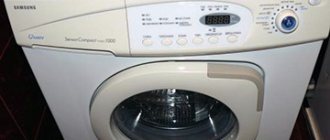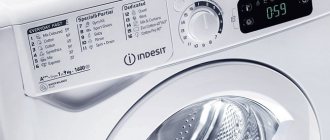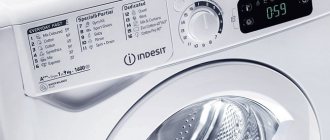Coolers or water dispensers are becoming more and more popular every year, and such devices can be used both in office premises and in the apartment. The need for clean water will never decrease. Any equipment can become faulty from time to time, regardless of quality and manufacturer. If the breakdown and malfunction are minor, then you can do the repairs yourself without contacting service centers.
High-quality repairs can only be made if the cause is identified. Before disassembling the water purification device, carefully read the instructions for the cooler, which indicate possible malfunctions and how to solve them.
Cleaning a water cooler: subtleties and nuances
Before you begin processing yourself, you must take into account that this procedure requires the allocation of free space and takes quite a lot of time.
Therefore, it is necessary to prepare in advance a clean bowl for rinsing “trifles”, a soft lint-free cloth, a brush (or a clean toothbrush), and detergent (Mr. Muscle will do for a start). It is advisable to carry out this procedure in the intervals between replacing the container - this will reduce the likelihood of bacteria getting inside again. The presence of foreign substances on structural elements leads to their coarsening and shortening their service life.
External sanitization
First of all, you need to disconnect the dispenser from the electrical network, then remove the bottle and drain the water. Since disassembling a water cooler with your own hands does not involve any particular difficulties, all external elements must be dismantled: the drip tray, decorative panels (if any), as well as the neck opening with a needle for water supply.
Bacteria, getting inside the bottle and settling on the walls of tubes and other elements, can cause serious harm to human health.
All external surfaces should be thoroughly wiped with a soap solution, to which you can add a little iodine or ammonia
In the latter case, it is advisable not to forget about precautions. It's not just the front that needs a thorough cleaning - the back and even the power cord also need a good cleaning.
Sanitizing any cooler is a mandatory event that must be carried out periodically with your own hands or with the involvement of professionals.
Cleaning the cooler: washing removable parts
All removed parts can be washed in a bowl of cleaning solution (or dishwashing detergent). In this case, before rinsing, it is necessary to thoroughly clean the resulting deposits and accumulated dirt. For hard-to-reach places, it is better to use a special brush or toothbrush.
Please remember that plastic parts must not be rubbed with scrapers or a metal sponge!
As an additional measure, you can spray the removed parts with a disinfectant solution and leave them there for 10-15 minutes. This procedure should be performed after primary processing. In most cases, washing a water cooler at home requires following a simple rule - it is better to put the cleaned parts separately.
After washing, they should be handled with rubber or disposable gloves.
Processing of internal parts
Deep cleaning of the dispenser is carried out using a previously prepared solution. For this purpose, both special products produced by industry and the usual ones can be used: vinegar or citric acid. Typically, cleaning a cooler is carried out in two stages:
- Disinfection and descaling.
The prepared solution is poured into storage containers until they are completely filled. In this case, both taps are left open to remove air pockets and allow the cleaning liquid to fill all water supply channels and pipelines. Remove the bottle receiver - the device is unscrewed, and citric acid diluted with water is poured into the resulting hole.
After this, you need to turn on the dispenser and wait until the heating indicator goes out. Then, at intervals of 10 minutes, you need to drain a glass of water, alternately from each tap. The drained water returns back to the cooler. The recommended duration of the entire procedure is about half an hour.
Washing. At this stage, you should thoroughly rinse all internal parts that came into contact with the solution. To do this, you need to carry out a final spill with four times the volume of a standard 19-liter bottle. Despite the fact that flushing a water cooler at home requires significant excess water consumption, it is prohibited to use city water supply as a source!
Pour part of the disinfectant solution into the water tank, leave it there for 10 minutes, then drain through the taps.
Additional cleaning
The final stage of cleaning is washing and disinfecting the internal removable parts that are in direct contact with water: plastic tubes and lines, taps, separator, as well as all kinds of holders.
When using any detergents, pay attention to the instructions supplied with the device. Not every model can be treated with universal tools
It should be remembered that some cooler models allow the installation of taps with internal threads - you need to be careful when dismantling them. Otherwise, cleaning is carried out using the surface washing method described above.
If you wash the device regularly, severe contamination will be avoided.
Detailed cleaning instructions
There are several basic methods for cleaning a cooler; we list the main stages of sanitary work. This method is perfect in a situation where the water has not yet been heavily polluted. Cleaning a water cooler at home is quite simple; you just need to fulfill a few conditions. The most convenient time for professional cleansing is when the liquid runs out. Next, you need to turn off the device and give it time to cool down so as not to get burned when cleaning. Remember that you cannot turn on the device again while you are doing maintenance, otherwise you may damage the heater. Cleaning a water cooler yourself is easy and won't make you sweat at all, you just need to follow the instructions.
Preparatory work
You need to open up the product you usually use to clean dishes and mix it with water to clean the body of the appliance. It would also be a good idea to purchase citric acid; it will cope well with microorganisms and “centuries-old” plaque.
External surface cleaning
Disinfect your hands with an antiseptic, which can be alcohol, good soap, or simply wear medical gloves. Wipe the surface of the machine thoroughly with a damp cloth; it can be pre-soaked in dishwashing solution.
Pay special attention to the grille and the back of the device, you need to remove all traces of dust. After this, you should go over the body again with a dry towel.
External washing is of great importance, as it eliminates bacteria that subsequently enter the machine.
How to wash the inside
To do this, use a prepared mixture of citric acid and water in a ratio of 100 g of product per 5 liters of liquid. If you are wondering: how to clean a fan? – then there is nothing complicated, you need to thoroughly wipe it from dust. Next you need to disassemble and clean the cooler.
Cleaning, disinfection
To perform internal disinfection, unscrew the bottle receptacle counterclockwise. Pour the diluted mixture inside the device so that it fills the receiving tank. Be careful: the liquid must completely fill the tank. To do this, you need to open the taps and monitor the thickness of the jet, which should be the same as during normal operation of the cooler. If the water flow is weak, then you need to add detergent to the tank.
Scale
The method described above, that is, a solution of citric acid, will not only destroy bacteria and algae, but also rid the device of scale. To effectively remove the deposits that have formed, you should plug the device into a power outlet and wait until the water heats up. Then turn off the cooler and drain the water after five hours. How to wash the device? Quite simple: pour clean water and repeat heating, release the first batch and enjoy using it.
Cleaning removable parts
After you have managed to wash the device from the inside, you should move on to cleaning the removable parts. Remove the drip tray and taps and rinse them thoroughly. Don't be afraid to use a brush and dishwashing chemicals. After the procedure, you should wipe these elements dry and put the parts back in place. If you find it difficult to remember the location of the devices, make a note with a marker.
Rinsing
Rinse the container and equipment from the mixture or special compositions purchased in the store and intended for cleaning, fill with clean water. If you feel a sour taste, you need to repeat the procedure several more times.
How to disassemble a water cooler
The algorithm for disassembling dispensers is as follows:
- Use a figured screwdriver to unscrew the screws.
- The back cover is removed.
- The device is inspected internally to determine if there is a malfunction.
- If the water heats up weakly, inspect the metal tank with hot water (at the very top of the device) for scale deposits. To do this, first unscrew the drain plugs located at the bottom of the tank, at the back, so that the tank is free of water. There may be two traffic jams, but there may also be one.
- Using a small curly screwdriver, unscrew the 4 screws under the seal.
- Next, use wrench No. 15 to remove the rubber seals.
- Using pliers, cut off the clamps from the pipe and other connecting pipes.
- Electrical and grounding wires are disconnected after unscrewing the screws.
- The temperature sensor is disconnected from the tank.
- The tank is removed.
- The condition of the thermal paste is checked and, if necessary, applied in a thin layer.
- If there is a fiberglass insulation coating, it is removed, after which the tank is cleaned inside.
- If the heating tank is in order, inspect other components and connections.
The needle falls out or breaks
This kind of breakdown occurs more often than dispenser owners would like. After all, it is possible to repair the needle only on some models that allow dismantling the stem or the entire bottle receiving unit. Replacing the needle involves completely dismantling the bottle receiver. This part is rotated in the mounting socket and pulled up when the slots of the bottle receiver come out of the mounting sockets (at this moment you will hear a characteristic sound). After this, the old part is thrown away, and a new unit with a working needle is put in its place.
If you don’t want to deal with broken needles, buy a bottom-loading dispenser. Such a device does not have a bottle receiver and a rod that pushes the shut-off valve into the bottle cap.
Cooling using Peltier elements
The use of these parts to assemble a homemade air conditioner is a controversial issue. It's all about the energy consumption of Peltier elements (otherwise known as thermoelectric converters), which is incomparable with the amount of cold produced. Outwardly, they look like plates with 2 wires; when electricity is connected, one surface of the element generates heat, and the other - cold.
What do home craftsmen and car enthusiasts who strive for comfort do:
- Buy from 4 to 8 Peltier elements and mount them with the “hot” side on a ribbed aluminum radiator.
- This radiator is installed in such a way that it is cooled by street air.
- A cooler from the computer is attached to the “cold” side of the converters so that it supplies room air to the plate.
Peltier elements actually cool the air flow, but at the same time they simply consume electricity. After all, half of the energy is wasted because it is converted into heat and dissipated in the atmosphere. That is, for every Watt of electricity expended you will receive no more than 0.5 W of cold, while with a split system this ratio is completely different – 1:3. You can see how this works in practice in the next video:
Technical characteristics of coolers
The leading characteristics by which dispensers are selected are as follows:
Power spent on cooling and heating water; Heat treatment speed; Technology used in cooling; Maximum heating and cooling temperature (optimum: +40C for cold water and +980C for hot water); Availability of temperature controller; Method of installing a water tank; Device size; Filtration method (preferably multi-stage purification); Availability of a disinfecting ultraviolet lamp (important for children's institutions); Additional functions: automatic on/off timer, dosing, child lock.
To what temperature does the cooler heat water?
The operating principle of the cooler heating system is practically the same for different models. The design of such a system includes:
- storage tank for heating water (volume from 0.6 to 3 l) with thermal insulation protection;
- heating device (can be assembled with a heating container or is a separate unit). The heater power, depending on the model, is in the range of 400–1200 W;
- control board;
- 2 temperature sensors (the response temperature of the lower controller is from 70 °C to 86 °C, and the upper one is from 93 °C to 96 °C).
When the heating system is turned on, the dispenser heats the water in the cooler's storage tank until the upper temperature sensor is activated. The temperature of the liquid is brought to the value required for making coffee or tea. When the heating system is turned off, the water cools down. When its temperature drops to 70 °C, the lower temperature sensor will work and the heating equipment will turn on. The device operates cyclically. It heats up the water for a couple of minutes and then turns off for 10 or 20 minutes.
If you open the hot water tap, then instead of the flowing volume, liquid from the bottle will flow into the storage tank. This will cause the temperature inside the heating container to gradually decrease. When the temperature reaches the set value, the lower sensor will work and the cooler will quickly heat the incoming water.
It should be noted that operating the heating element without a water bottle installed will cause it to burn out. Such damage is not covered by the manufacturer's warranty. Employees of the cooler service center will easily determine the cause of the malfunction when diagnosing broken equipment, so always turn on the dispenser only after installing a bottle of water.
In order for the water cooler to work as long as possible without serious breakdowns and expensive repairs, it is necessary to follow the equipment maintenance schedule and the frequency of its prevention.
Recommended articles on this topic:
- Types of water coolers: models, functions, photos
- Water cooler for the office: types and selection criteria
- How to drink water correctly: nuances and tips
As noted above, the temperature sensors in the heating container are triggered when the water heats up to a temperature of 92 to 96 °C (depending on the model of the device).
Here you need to provide the following information:
- Based on information from a school physics course, many people know that water begins to boil at 100 °C.
- The actual temperature of water poured from a boiled kettle ranges from 90 to 95 °C.
The range of leading manufacturers includes water dispensers with a turbo heating function. If conventional models are equipped with heating elements with a power of 420 to 600 W, then devices with turbo heating use systems from 700 W. The latest version of coolers is necessarily equipped with a liquid crystal monitor, which displays the temperature of the water in the heating storage tank. In addition to the LCD display, such devices have a button for manually turning on the turbo mode for heating water.
Traditional coolers heat from 4 to 6 liters of water per hour. This performance is quite enough to provide hot water to an office with a small number of employees.
If there are a lot of people working in the room, then it is not necessary to buy several dispensers. For such cases, manufacturers produce floor coolers equipped with large heating containers. Such drives have heating elements with a power of more than 1200 W.
The appearance of powerful dispensers does not differ from standard models. Most parts for assembling cases fit both standard models and coolers with increased performance (models with turbo heating have performance ratings exceeding 12 l/h).
It's not a refrigerator, but it's cold
When the resistance of the temperature sensor (thermistor) drops below 33 kOhm, the semiconductor element and the cooling fan turn on.
From the cooling radiator (Fig. 4), on which the fan is installed, a coil goes into the water tank, which absorbs the cold emanating from the semiconductor element, and the water temperature drops.
In practice, this element and the fan can work for several hours in a row (especially in summer, when the ambient temperature is +25 ° C or more).
At other times of the year, as a rule, the cooler turns on automatically for a short time of 5-8 minutes.
As the water in the tank cools, the resistance of the thermistor increases. In table Figure 1 shows the resistance values of the thermistor MMT-1, MMT-4 (designation on the NTC board) at different temperatures. These parameters were established through the author's experiment.
Table 1. Dependence of the resistance of the standard thermistor on temperature
| Temperature, °C | NTC resistance, kOhm | Cooling time to +5° C, min |
| Room regular +22 | 11,8 | 8 |
| Hot summer +25 | 10 | 12 |
| Hot summer +30 | 8,2 | 25 |
| Chilled tank +5 | 33,3 | — |
Thus, the cooler automatically turns off when the thermistor reaches a resistance of 33.3 kOhm.
It is clear that in the hot summer, for hot office guys, the water temperature of +5° C may not be low enough. So, we will have to work on further cooling the water.
Rice. 5. View of the printed circuit board of the cooler temperature monitoring and control device
There are no “manual” adjustments on the board.
It would be possible to change the resistance values in the voltage divider (in the comparator arms), but, in my opinion, this path is irrational and expensive.
Option one
I recommend this as the easiest way to cooling.
Thermistor connection locations are indicated by red lines. Nearby, a circle indicates the location for connecting an additional resistor (marked on the board as RNTC, but not connected).
In order for the cooler to work longer, even after passing the +5° C threshold, it is necessary to replace the MMT-4 resistor (designated NTC) with another one: with a resistance (at room temperature) not 12 kOhm, but slightly lower - 8.2 kOhm or at least 10 kOhm.
Then, when the temperature reaches +5° C, the resistance of the thermistor will increase to 27.7 kOhm and water cooling will continue (this has been established experimentally) - until the moment when the resistance of the thermistor reaches the range of 32-34 kOhm. (there are different values as a result of the experiment). The water temperature at this moment will drop to +1° C. All that remains is to place a glass in the cooler and shudder...
Cooler is leaking
- In 95% of cases the problem lies in the bottle itself. Cracks in the bottle
lead to an imbalance in the cooler's hydraulic system, which is why water leaks. It may seem to you that water is flowing from the bottom of the cooler - this is true, with this problem it flows through the entire cooler and spills onto the floor. This problem can sometimes not be diagnosed simply by visual inspection - try installing another bottle and checking if the leak is fixed. - The problem may also be that the drain plug
on the rear panel of the cooler is not screwed on properly. Try tightening it more tightly or purchasing it and replacing it with a new one. - One of the silicone
supply or outlet tubes is leaking. For diagnostics, unscrew the back panel and check the integrity or tightness of the tube connections. If there are cracks, you can buy and replace the tubes yourself. - If you have a cooler with water supply by pressing with a cup, then check to see if the part above the lever has unscrewed, or if cracks have appeared in the plastic
. Check for cracks both outside and inside, under the panel. - Check the heating tank or cold water tank
. If there are drops on them and water collects from below, then you should contact a specialist to replace the necessary spare part.
Often when there is a problem, they try to find other reasons, where it is written exactly that the cooler is leaking from underneath. In case of any breakdown accompanied by a leak, the cooler will leak from BOTTOM, since water flows downwards - this is physics J. Your task or the task of the master is to determine where the leak begins, and not where it leads.
The faucet leaked after replacing the bottle
It happens that just yesterday a working faucet begins to drip immediately after replacing the bottle. The cause of such a breakdown in 9 cases out of 10 is a hygienic seal forgotten on the neck of the bottle. If you forget to remove the paper sticker from the neck before changing bottles, the remaining seal will end up in the silicone tube or get stuck in the faucet lock assembly.
To fix this problem, you need to remove the bottle, dismantle the tap, rinse the silicone tubes and valve, and reassemble the device in the reverse order. There is no need to change the shut-off assembly and tubes. To flush the internal water supply, lower the end of the silicone tube into a bucket and place a half-empty bottle on the stem.
Types of water coolers
Water coolers are divided into several types depending on the installation method and cold water supply mode.
- Floor coolers. They operate from a 220 V network and are installed on a smooth and flat floor surface. The upper front panel of any device has an indicator board that displays information about the selected operating mode, that is, what water is currently supplied - hot or cold. Some models of floor coolers are equipped with an ozonation chamber, which allows disinfection of cutlery and dishes. The floor cooler is installed on a flat surface and connected to the electrical network
- Desk coolers. They are a classic version of a bottled dispenser. The devices are a structure consisting of a large plastic base and a water container with a volume of 18 to 30 liters. Before placing a desktop cooler, you should check the strength of the surface on which you plan to install the device, since it is quite heavy and can fall during operation. A tabletop cooler works in the same way as a floor cooler, but is installed on a table and requires checking the strength of its base
- Flow dispensers. In flow-type coolers, water does not come from removable portable containers, but from the general plumbing system. Such devices have a built-in cleaning system, the operating principle of which is similar to the design of home water filters installed under the kitchen sink. Additionally, some models can be equipped with ultraviolet lamps designed to combat harmful microorganisms. Flow coolers do not require the purchase of water in plastic bottles, but take it from the water supply system
If you plan not to use the device for a long time, it should be disconnected from the power supply.
Table: advantages and disadvantages of different types of coolers
| Cooler type | Advantages | Flaws |
| Floor |
|
|
| Desktop |
|
|
| Flow-through |
|
|
Depending on the cooling technology used, coolers are of two types: electronic and compressor.
Coolers with electronic cooling
The operation of coolers with an electronic cooling system is based on the passage of electric current through conductors, which are cooled at the points of their connection.
- cooling rate is about 3 l/h;
- reliability and environmental friendliness. Devices of this type do not use freon, so they do not have problems with refrigerant leakage;
- light weight and low cost.
Coolers with compressor cooling
Coolers with a compressor cooling system operate by using a coolant - freon, which is also used in refrigerators.
Compressor coolers work on the same principle as household refrigerators
Features of compressor coolers:
- durability and strength;
- high performance;
- possibility of adjusting the cooling temperature.
Table: advantages and disadvantages of electronic and compressor coolers
| Cooler type | Advantages | Flaws |
| Electronically cooled |
|
|
| Compressor cooled |
|
|
How to descale a cooler
Sanitary treatment of coolers from scale is necessary for the following reasons:
- drinks develop a foreign, unpleasant odor and taste;
- the water begins to boil much more slowly than before;
- the energy consumption for operating the device increases;
- scale promotes the formation of corrosion;
- the dispenser may break down prematurely;
When using any detergents, pay attention to the instructions supplied with the device. Not every model can be treated with universal tools
However, descaling has steps common to all models. The step-by-step process looks like this:
- Disconnect the device from the network.
- Drain all liquid through the tap.
- Mix water with citric acid or vinegar.
- Pour the prepared solution into a container.
- Leave for 15 minutes.
- Start the process of heating the water and boil the liquid for 20 minutes.
- Leave the solution in the container for 5 hours.
- Drain the solution and pour clean water into the cooler for rinsing.
- After 15 minutes, repeat the rinsing procedure.
- Wipe the device elements.
- Plug in the cooler.
An important point: it is not always possible to clean the appliance from scale, especially when it has reached the fan. In order not to disrupt the operation of the device, sometimes it is better to seek help from professionals.
https://youtube.com/watch?v=XFd7_YsLXcs
Follow the rules:
If you wash the device regularly, severe contamination will be avoided; when it is not possible to clean the cooler with soapy water, you should purchase special household chemicals in stores (work only with gloves); important requirement: disassemble the device only if you are confident that you can assemble it; At home, it is better to wash the device using vinegar and lemon (you can find other tips on YouTube, but not all of them are safe for the device); Do not treat parts with acid to avoid damaging them; do not start cleaning a heated cooler, this can lead to damage to a number of parts; Before each bottle replacement, wipe the neck of the bottle receiver with alcohol-based wet wipes, and also clean the needle of the device element; Upon completion of washing the equipment, drain a certain amount of water to clear the paths of any detergent particles accidentally retained in them.
Proper and timely cleaning of the cooler helps to extend its service life and allows you to be confident in the purity of the water you use.
Prevention
The main rule when using a cooler is to regularly clean the external and internal surfaces. Thanks to this, the likelihood of scale deposits and complex contaminants is reduced, the quality of the water does not suffer, and it becomes possible to avoid the formation of mold inside the cooler, as well as an unpleasant odor.
A change in the taste of water is one of the main signs of contamination of the cooler system.
Other tips:
- external components (taps, drip tray, front panel and bottle connection ring) are cleaned more often, since they are in intensive use; if traces of dirt are regularly removed from them, the intensity of plaque formation on internal surfaces is reduced;
- You should not attempt to clean the device yourself if you are not sure that you will be able to reassemble it after dismantling it;
- The cooler can be cleaned only after all structural elements have completely cooled down;
- Before installing the bottle, you need to clean its neck, as well as the needle of the device, with alcohol wipes. Additionally, wipe the side surfaces of the water container, first remove the protective polyethylene;
- Before installing the bottle, you must wash your hands, because there is a possibility that pathogenic microbes can get into the water from the outer surfaces;
- It is forbidden to completely immerse the cooler in any liquid to speed up cleaning, as this may damage the conductive elements of the structure;
- steam generators and other equipment whose operating principle is based on increased pressure and extreme temperatures cannot be used to remove contaminants;
- You should not use aggressive substances to clean the cooler, these include gasoline, kerosene, acetone, Domestos, etc.
home-gid.com
How to lubricate a fan
To lubricate the fan, you need to disassemble the computer and remove the cooler from it.
Place the fan on the table and carefully remove the sticker. Part of the sticker is located just above the gap for the wiring.
From here it is easier to bend it.
Remove the rubber plug from the middle of the fan
To do this, you can use a small screwdriver, carefully placing it behind the edge of the plug.
You will see the end of the shaft inside the cylinder in the resulting depression. Place one drop of oil into the indentation.
Return the rubber stopper to its place and cover it with a sticker on top. Sometimes the sticker stops sticking. Then you can use regular electrical tape. After the fan has returned to its place, the computer must run for several minutes before the oil completely lubricates the cooler. After some time, the computer will become quieter and stop getting too hot.
As you know, a fan or cooler is a very important part of your computer. It regulates the temperature of the processor and prevents it from overheating. Everyone knows the sound of a computer fan running. But if at one point you notice that this sound has changed, for example, your computer began to hum like an airplane taking off, then this means that the fan clearly needs help, that is, cleaning and lubrication.
Instructions
Unscrew the bolts using a screwdriver, disconnect the connector, and remove the fan from the case.
Using a brush or cotton swab, carefully clean the fan blades and fan housing. Remove all accumulated dust and dirt.
Under this rubber band you will find the fan hub and axle, which you should lubricate. To perform this operation, take spindle or machine oil. You can also use a CV joint. For lubrication, apply a little oil to the fan shaft.
The oil should cover it, but do not drip too much, because otherwise, when you put the rubber in place, the oil may leak out of the recess and stain the body, then the sticker will not be able to stick back. To apply the oil more accurately and to prevent it from spilling, you can use a medical syringe. In this case, the lubricating oil must be very thin so that the syringe flows freely.
You can also lubricate the internal parts of the fan, but to do this you will have to disassemble it. We strongly advise you not to do this if you are not a specialist - a non-professional will not be able to cope with such a thin one, and you risk damaging the cooler.
Every laptop owner has encountered a problem in which the device begins to get very hot and at the same time make strange sounds. The reason for this is contamination of the cooler. After all, during operation, dirt and dust regularly enter the laptop. As a result, the fan, designed to cool the “brains” of the computer, becomes dirty and sometimes even stops rotating. What to do? Of course, lubricate and.
The first thing you need to understand is how to lubricate the laptop cooler. Is the oil ok? Maybe. But under no circumstances should it be plant or animal! Of course, for some time such oil will help you get rid of noise, but then the cooler will simply fail. The fact is that sunflower oil dries out very quickly, and all kinds of dust and dirt stick to it with redoubled force.
Also, you should not lubricate the laptop cooler with grease, petroleum jelly and other thick fatty lubricants, which the centrifugal force will squeeze out and scatter throughout the entire inside of the device. Maybe alcohol or tar? No, they will completely worsen the fan’s performance.
Then what kind of lubricant is suitable for a laptop cooling system? It must meet several requirements:
- Have an adhesive base;
- Be of a fairly thick, viscous and light consistency;
- Capable of operating at high speeds (the cooler produces about 4-5 thousand rpm on average);
- Withstand high temperatures (at least up to 100 °C).
Considering everything said above, it turns out that several options are suitable:
- Synthetic automobile oil.
- Lubricating oil for sewing machines, power tools, hair clippers, etc.
- Silicone grease designed for lubricating locks, hinges, mini-gearboxes and other household appliances.
- Special lubricant for coolers (for example, Molykote Omnigliss).
Is it possible to lubricate a laptop cooler with WD-40? We still wouldn't recommend it. Of course, the fan will stop making noise for a while, but WD-40 can damage other internal components. In addition, this product smells quite unpleasant. And don’t forget that WD-40 can be used to lubricate the same door hinge, which does not rotate at such a tremendous speed as a cooler.
Why doesn’t my computer or laptop turn on after the procedure?
Sometimes after you have cleaned the cooling device yourself, the device itself refuses to start.
This happens for two reasons:
- Incorrect assembly.
- Damage to contactors and wires.
Try to disassemble it again for initial diagnostics. Check if everything was assembled correctly.
Why did the fan start to chirp?
It's worse when all the components are working, but the annoying noise has not disappeared. On the contrary, it is intensifying. This also means that you made a few mistakes during assembly. Most likely the impeller blades are touching the housing or radiator. Often they touch the power wires in some way.
Try to hang it evenly.
Water cooler device
The design itself includes a body, its upper part is a bottle with liquid. It is equipped with two taps, they are intended for feeding, however, there are also models with three such products. As for the internal analysis, it is a system of various tubes and pipes. In addition to them, there are two reservoirs. One of them is responsible for cooling, and the other for heating. A valve is formed between them, it is thanks to it that the pressure is balanced, and therefore two liquids with different temperatures do not mix. It is worth not forgetting about the water inlet through which the supply is made.
Flow cooler operating diagram
The named device is made up of a four-stage filter and an ultraviolet lamp. This promotes the use of the water source as a piped water supply. Therefore, you don’t have to worry about possible contamination of bacterial particles, since they are completely eliminated inside the structure. In general, a deep cleaning is performed. And due to the fact that running water is used, we can safely talk about efficiency and the absence of restrictions on liquid consumption.
Scheme of operation of a cooler with flow cooling
Speaking about this system, one cannot fail to mention the following components:
- A carbon prefilter that removes not only chlorine, but also various organic and chemical unnecessary substances.
- Ultrafiltration filter. Thanks to it, characteristic components such as bacteria and viruses are removed. A reverse osmosis membrane also does a good job.
- Sedimentary. Water is purified from elements whose size is at least 5 microns.
- Compressor. It is necessary in order to establish a normalized pressure to convert the refrigerant into liquid (a function similar to a refrigerator).
- A carbon post-filter removes unwanted odors and tastes from water that may remain after passing through the membrane.
- Naturally, the device also includes taps with containers for dispensing cold and hot water.
- To ensure optimal performance, a special pressure is required, which is what helps install a booster pump.
Do-it-yourself water cooler repair and main malfunctions
Like any equipment, water coolers are prone to breakdowns. Some malfunctions can be corrected independently, without resorting to service assistance.
Cooler dirty
Over time, dirt can accumulate in the dispenser, causing it to stop working. To clean the cooler you need to:
- turn off the unit from the network and remove the water bottle;
- thoroughly rinse the surface of the cooler with regular dishwashing liquid;
- carefully treat the place where the needle is located, over which the bottle is placed;
- wash and rinse the tray;
- Wipe all parts of the cooler dry with a napkin or clean rag.
The main dirt accumulates at the junction of the bottle and the cooler
Then the dispenser is put back together and some water is drained through the taps to wash away any remaining cleaning agent from the system.
Advice! It is recommended to carry out preventive maintenance of the cooler once every few months, without waiting for clogging.
Cooler does not heat water
The dispenser stops dispensing boiling water for several reasons:
- the cooler is not connected to the outlet;
- the start button on the front panel is not pressed;
- the fuse has failed;
- The heating element is broken.
If an external inspection shows that the dispenser is turned on, but there is still no hot water, you need to unplug the cord from the outlet and remove the back panel of the unit. Using a multimeter, check the serviceability of the fuse, and if the device shows a value above zero, replace the element with a new one.
The fuse is located between the contacts on the wall of the heating tank and looks like a black button
If the efforts made do not bring results, the cooler must be sent for service. It is not recommended to completely disassemble the device and remove the heating element; this work should be performed by professionals.
There is no water in the cooler
If the cooler does not supply water at all, you need to dismantle the bottle and check whether the protective label has been removed. If it is present, liquid will not flow into the dispenser.
In addition, sometimes an air lock may appear in the cooler, preventing the passage of liquid. In this case, the unit just needs to be shaken, when bubbles appear in the bottle, the congestion will be eliminated.
Water flows out of the taps by itself
If water drips from the cooler, then first of all you need to check the integrity of the bottle. Sometimes microcracks appear in it, in which case you should simply replace the container.
When liquid constantly drips from the tap, and replacing the bottle does not solve the problem, the unit must be sent for repair. Troubleshooting requires disassembling the device, and this cannot be done without professional knowledge.
Cooler does not cool water well
If cooling is too slow, you need to check the thermostat settings and make sure that it is set to maximum values. The reason may also be overheating of the cooling system. If recently the cooler was working properly, you need to turn off the device from the network for half an hour, and then turn it on again.
Poor quality cooling due to overheating can be caused by incorrect installation of the dispenser. It cannot be placed close to the wall; a gap of at least 10 cm is required for ventilation.
Attention! At low power, the unit may simply not have time to cool the water. In this case, you need to reduce consumption and re-read the operating instructions for the specific model.
Cooler does not heat water well
If there is hot liquid in the dispenser, but the temperature clearly does not reach the maximum values, the reasons may be the following:
- The cooler's throughput is lower than the consumption of boiling water - standard models heat no more than 5 liters of water per hour;
- the internal heating element is covered with scale, this happens with old units.
If in the first case it is enough to reduce the consumption of hot water, then in the second the dispenser will have to be repaired through a service. To remove and replace the heating element, it is necessary to disassemble the entire unit.
Proper operation and care of the device
Cooler equipment must be handled with care. Many manufacturers guarantee the durability of their products, but this is possible with proper care and compliance with the rules and instructions. A short list of them:
- The temperature inside the room in which the device is installed must be between 0 and +35 degrees Celsius.
- Buy high-quality water, which is certified before sale.
- If you do not plan to use the cooler for some time, it is better to disconnect the device from the network.
- Clean the cooler body regularly. To do this, you will need a soft cloth soaked in a solution without aggressive or abrasive substances.
- Change water bottles strictly upside down.
- If it was necessary to turn off the mechanism for a short period of time, at least three minutes must pass before it can be restarted.
- Keep the condenser clean. Dust often accumulates on it. The drip tray and bottle socket must also be in good condition.
- According to the instructions, before transporting the unit, it is necessary to remove any remaining water from the hot and cold taps and the hot medium tank.
Regular preventive maintenance is recommended. Finding problems early can save you money and time. Workers will fix the problem as soon as possible before it causes breakdown of parts or the entire device.
Following the instructions will ensure long-term and trouble-free operation of the water cooler.
How to use a water cooler
The instructions for using the water cooler are very simple. Before use, first of all, you need to attach the bottle to the device:
- If the dispenser has a top load, then you need to remove the protective sticker from the cap or just carefully pierce it. Then the bottle is turned over and inserted, neck down, into the appropriate slot. Water will flow into the cooler for several minutes. If the unit is new, then after filling you will need to take a glass and drain approximately 500 ml of liquid from both taps; this is necessary to clean the system.
- With bottom loading, the water cooler connection diagram looks simpler: the container is placed in a cabinet, the water intake hose is connected to the neck and the dispenser is plugged into an outlet. Next, you need to press the power button of the device and close the lower compartment. The unit will fill with water in approximately 20 minutes; another half hour will be required to heat and cool the liquid. Afterwards, the power button can be switched back to an inactive state.
As for the daily use of the dispenser, the procedure depends on the features of the model. Some coolers supply water at the touch of a button on the front or top panel.
In budget units, you need to press the edge of the cup onto the tap itself, and after filling, remove the container so that the liquid stops flowing.
Important! To make the cooler last longer, if it is not used for more than three days, it is recommended to completely unplug it from the outlet.
Preparing the device for first use
Connect it to the electrical network. To avoid shorting the electrical wiring, do not modify the plug or extend the power cord yourself. Never place heavy objects on an electrical cord.
Press the hardware start buttons located on the back of the cooler unit. When properly connected, the red and green lights on the front should light up to enable heating and cooling. Wait about half an hour. The device will warm up/cool down to the appropriate temperatures.
In what cases can you not repair a cooler yourself?
A cooler is a complex system, the malfunctions of which need to be corrected by professionals.
Burnout of the heating element happens quite often if the operating rules are violated. Thus, when using untreated water, scale accumulates in the heating tank, which can cause equipment failure. You will not be able to replace the heating element or tank yourself. You only need to repair it in the center.
The cooling system may vary between devices. If there is a grille on the back surface, like a refrigerator, then the cooling is of a compressor type. If the rear utility is made of plastic with a grille for a fan, then the temperature decrease is electronic, carried out according to the Peltier principle.
The cause of compressor failure may be failure of the compressor motor, thermostat, control unit, or leakage of refrigerant. All these breakdowns can only be repaired during service, as disassembly of the equipment is required.
In the case of electronic cooling, only a specialist can determine the cause of the breakdown, so you should not do anything yourself.
In case of any malfunction that is not included in the list of solutions that can be resolved independently, you need to call a specialist.











